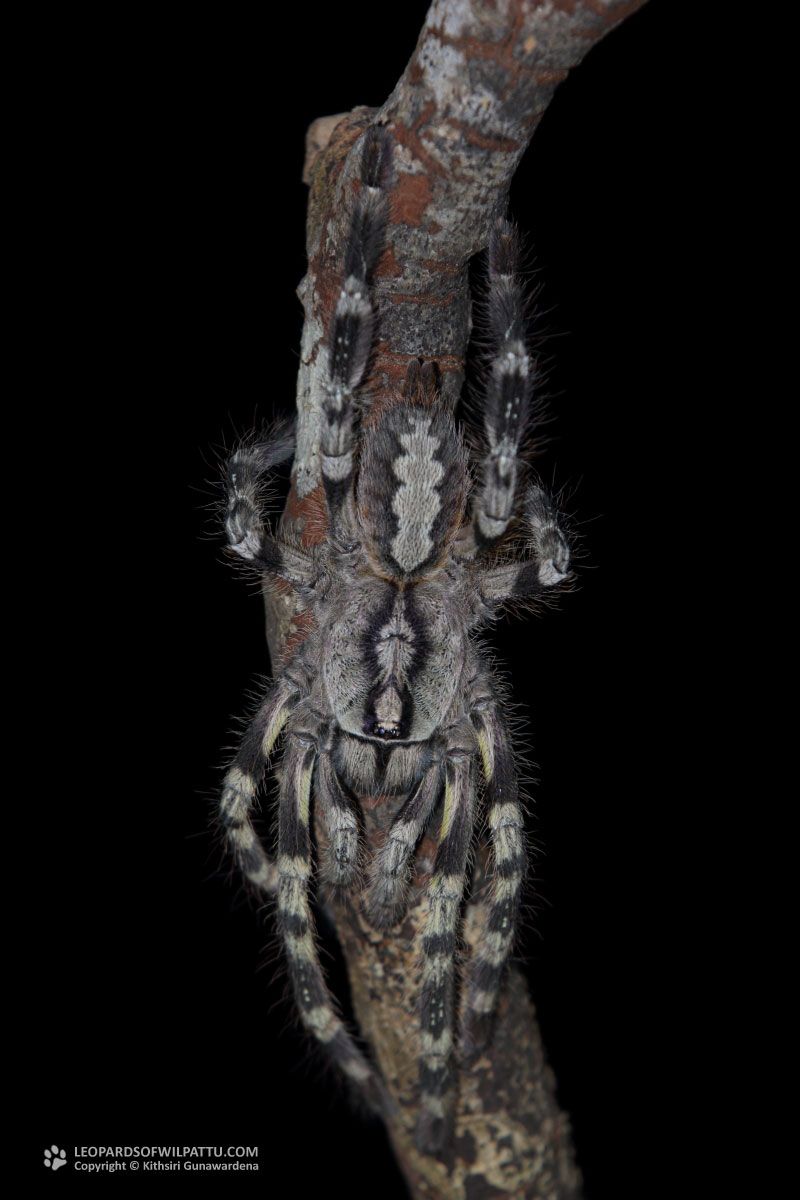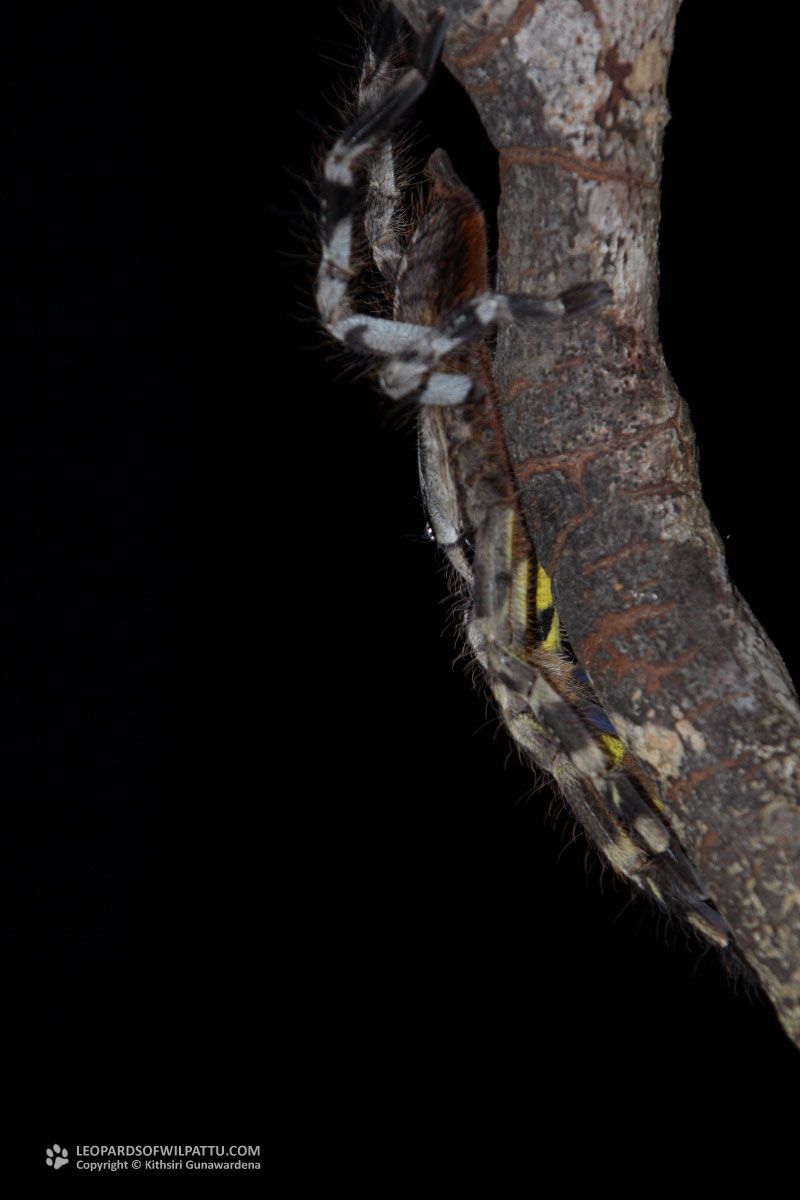
Tarantulas & Spiders ‹‹ Go Back
There are seventeen species of theraphosid spiders commonly referred to as Tarantulas recorded from the Indian Sub-continent. Eleven are endemic to India while the balance six species are endemic to Sri Lanka. Other than the above species Pedeserni’s Tiger Spider Poecilotheria pederseni, Smith’s Tiger Spider Poecilotheria smithi, Yellow-legged Tiger Spider Poecilotheria ornate, Ivory bird-eating spider Poecilotheria subfusca and Poecilotheria rajaei, (which was discovered in 2012 from Mankulam in the north) are the other species of theraphosid spiders found in Sri Lanka.
Even though many refer to them as Tarantulas, arachnologists (spider experts) refer to some species of Poecilotheria as Tiger Spiders while others are referred to as Bird-eating Spiders.
These spiders primarily inhabit tree holes, barks of mature trees and such other dark crevices during the day and would venture out at night in search of their prey, which include insects and other small invertebrates. There are many mis- conceptions about the poison of these spiders. Some villagers believe that a sting of one of these spiders causes the victim to curl up like a spider and die within an hour. However the actual position is that none of the species found in the country carry poison that can cause the death of a human. However a sting of these spiders will cause pain.
All the species that are found in the country are considered endangered due to many reasons. An island wide study conducted by Samarawikrama et al in 2005 found that the individuals recorded of each species is low which suggests that their populations are relatively small. Habitat destruction and fragmentation due to human activity is a threat to their conservation. These nocturnal hunters are closely associated with their microhabitat for protection and camouflage. Habitat degradation is a common threat with many species being susceptible to changes in habitat. Thus destruction of suitable natural microhabitats such as tree holes and tree barks would invariably have a detrimental effect on the survival of these secretive spiders.
Another cause for concern is the increasing demand for these spiders in the international pet trade and the rise in detections of illegal collection efforts from India and Sri Lanka.
Initial findings by the study conducted by Samarawickrama el al suggest that many theraphosids are restricted in their distribution and many more are not described to date.
Other than the above species I have so far observed two species of these interesting spiders in the wild. Pedeserni’s Tiger Spider Poecilotheria pederseni was observed at Jamburagala campsite at Yala National Park as well as on the Ficus tree close to the Veheragolla bungalow in Udawalawa National Park. Secondly, Yellow-legged Tiger Spider Poecilotheria ornate was observed and photographed at Sinharaja forest reserve. In Wilpattu I have observed the above species on three occasions by examining the trees close to park bungalows at night.


